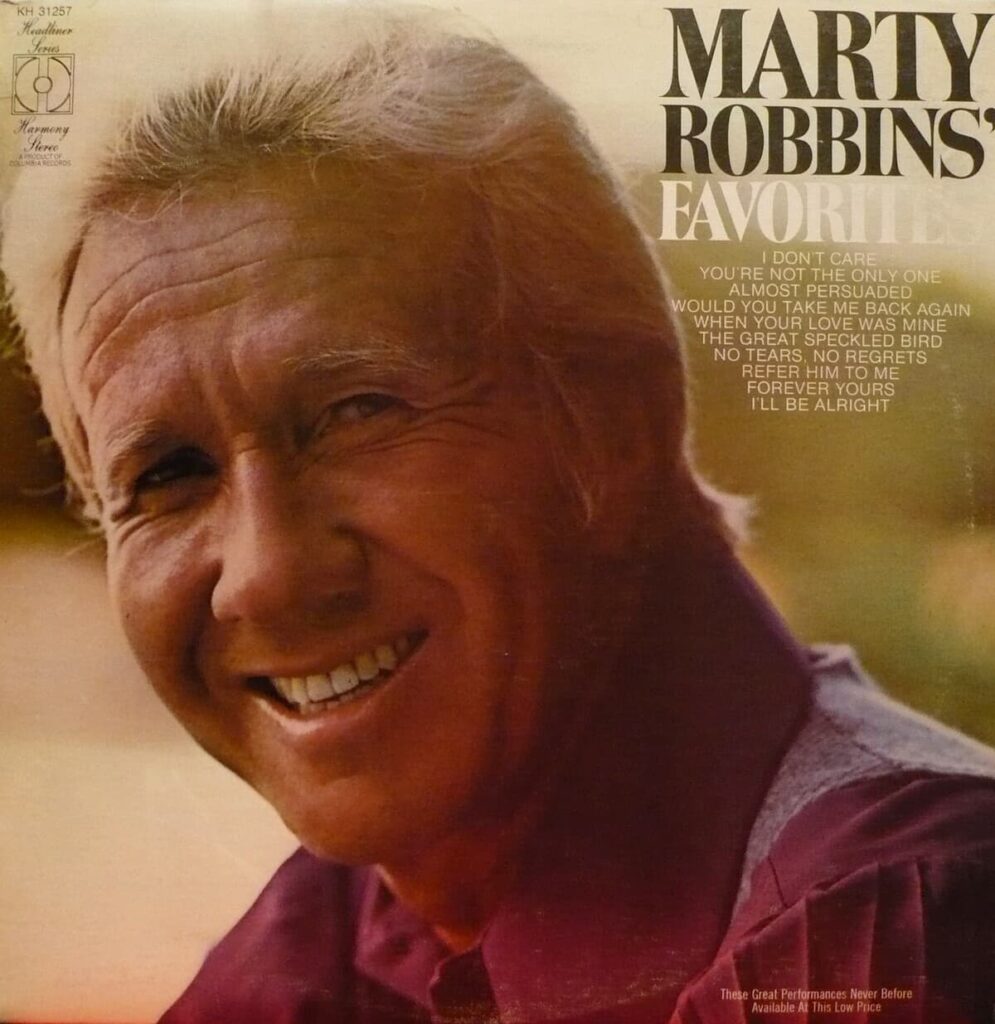
The Enduring Allegory: Faith, Persecution, and the Voice of the Country Soul
There are certain songs that transcend simple entertainment to become cornerstones of an entire culture’s shared heritage, and for the vast, sweeping landscape of American Country and Gospel music, “The Great Speckled Bird” holds that sacred position. When we speak of the great Marty Robbins, our minds often drift to the dramatic, cinematic narratives of the desert—the tragic romance of “El Paso,” or the thrilling action of Gunfighter Ballads and Trail Songs. However, to fully appreciate the depth of his artistry and his connection to the bedrock of traditional country music, one must turn to his magnificent rendition of this timeless hymn.
Crucially, “The Great Speckled Bird” is a traditional song, written not by Marty Robbins, but by the Reverend Guy Smith in 1936. The song was first made famous by Roy Acuff that same year and became one of the most important records in the history of Country music, establishing the connection between the genre and its fundamentalist religious roots. Marty Robbins recorded his version in 1966, releasing it on his album What God Has Done. As this was a well-known spiritual standard and an album track, Robbins’s version did not chart as a single on the major US Pop or Country charts, relying instead on album sales and radio play within the established Gospel and traditional Country circuits. This lack of a formal chart position scarcely diminishes its importance; in this genre, an artist’s commitment to the tradition often matters far more than commercial success, and Robbins delivers the song with the solemn respect and quiet reverence it demands.
The meaning of “The Great Speckled Bird” is drawn directly from the Bible, specifically Jeremiah 12:9: “Mine heritage is unto me as a speckled bird, the birds round about are against her; come ye, assemble all the beasts of the field, come to devour.” In the context of the early 20th-century American South, where the lyrics were conceived, this speckled bird became a powerful symbol. It represents the Fundamentalist True Church—the righteous faithful—who are “speckled” because they appear flawed or different in the eyes of the modern, secular, or liberal world. The “other birds flocking ’round her” represent the forces of modernism, other envious or false churches, and the worldly temptations that seek to attack and consume the pure faith. It is an allegory of persecution, resilience, and the ultimate promise that the true church, despised though it may be, will eventually be welcomed “in the portals of glory.”
For older readers, particularly those raised with a grounding in faith and country music, Robbins’s rendition evokes a deep sense of belonging and nostalgia for a time of moral certainty. Unlike the high drama of his gunfighter tales, here, Marty Robbins adopts a hushed, almost paternal tone. The musical arrangement is sparse, often featuring just a gently strummed acoustic guitar and a subtle bass line, allowing the powerful, scripturally inspired lyrics to take center stage. There is a deep, comforting solemnity in his voice, not the desperate edge of a fugitive in a ballad, but the calm assurance of a believer. This recording serves as a musical bridge, connecting the soaring, romantic voice of a pop-country crossover star back to the humble, heartfelt gospel songs played on battered instruments on the porches of the Deep South. It is a reminder that even a chart-topping superstar never forgot the simple, sustaining power of the spiritual foundation upon which American Country music—and indeed, so many lives—was built.